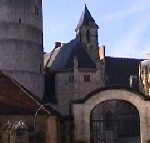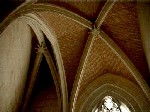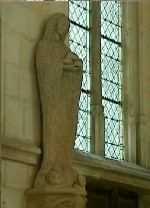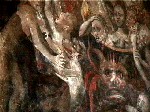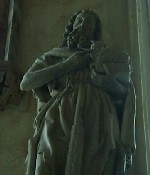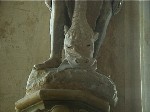|
Jean de Dunois, the Bastard of Orleans |
||
|
Châteaudun belonged to the counts of Blois until the last one sold it in 1391 to Charles of Orleans, a poet and brother to Charles VI. For services rendered in negotiating his release from English captivity, the former gave it, with the county of Dunois, to his half brother Jean, illegitimate son of Louis of Orleans, in 1439. Jean de Dunois (1403-1468) was a faithful comrade in arms of Jeanne d'Arc and one of the principal leaders in the long dynastic war with the English monarchy which resulted in the consolidation of what would later become the French nation state. From the age of 15 and for his remaining 40 years, he lived a life of continual military struggle to support the claims of the King of France. Clearly, for him, this castle was more than just a residence: it was to show all around that he had risen above a mere question of birth. The Saint Chapel All except the tower was razed, a Saint Chapel and new, far more comfortable living quarters were built, the Dunois Wing ; started in 1459 it took 10 years to build. He retained certain features, by now outdated from a military point of view ; the machicolations and the massive keep for example, which harp back to medieval times, as if to remind the observer of his military background, his power and his royal ancestry. While his new home was under construction, Dunois and his family lived in more modest buildings nearby. A nice detail, which says much about this interesting personage, is that even during the period of construction he had his personal library installed at the top of the tower under a brand new elegant roof. Most of the original oak roof timbers remain and are still one of the castle's main features 550 years later. It is strange to imagine, all those years ago, the ageing soldier reading one of his 53 books - quite a collection for the day, before the invention of printing - in front of a roaring log fire, high up in his tower, far from retainers and family, in what can already be considered to be one of the first mock medieval country houses. All he lacked was a glass of port and a cigar to make the perfect Victorian country gentleman! Ironically for this great fighter of the English, the only known remaining book of his collection is at present in the British Museum in London, a fitting twist to the tale of an impressive and eccentric man. The Saint Chapel contains a collection of fifteen statues, 12 from workshops of the Loire Valley date back to the end of the 15th century and were installed in Jean's time. Three other smaller ones were added a little later. There is also a 15th century wall painting depicting the last judgment. Mary the Egyptian, dressed only in her long, saintly locks of hair, Saint Barbe and Saint Radegonde to name a few, all are martyrs and all are disturbingly rather more good looking than their role would have required. One wonders to what extent a certain titillation wasn't in the minds of the artisans who created them; it certainly must have helped with sales. The name and legend of each is given for those of us not familiar with their plights and make sobering reading. The upper floor of the chapel gives access to the keep, to be visited with a guide whose lively and complete explanations are far more interesting than any written text. The rest of the Dunois wing is open to visit; enormous kitchens, dungeons, a court room dating back to the French Revolution, the presence of which probably explains why the building suffered little at that period, cells and the inevitable accompanying graffiti, tapestries and impressive views across the town and surrounding countryside. A medieval spiral staircases provides access to upper floors. |
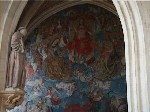
Painting and St Francis |
|
|
The Chapel |
||
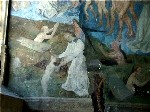 |
||
|
Chapel roof |
Heaven | |
|
St Mary the Egyptian |
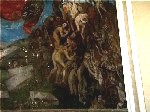
Hell |
|
| Details of Hell | ||
|
|
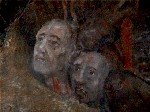
Damned |
|
|
John the Baptist |
||
|
|
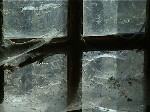 |
|
|
Detail |
Window with cobwebs | |
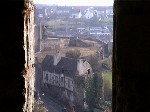 |
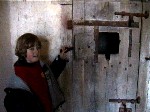 |
|
|
View from Dunois wing |
Prison door | |
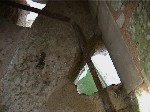 |
 |
|
|
Machicolations |
The Loir | |
